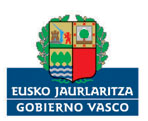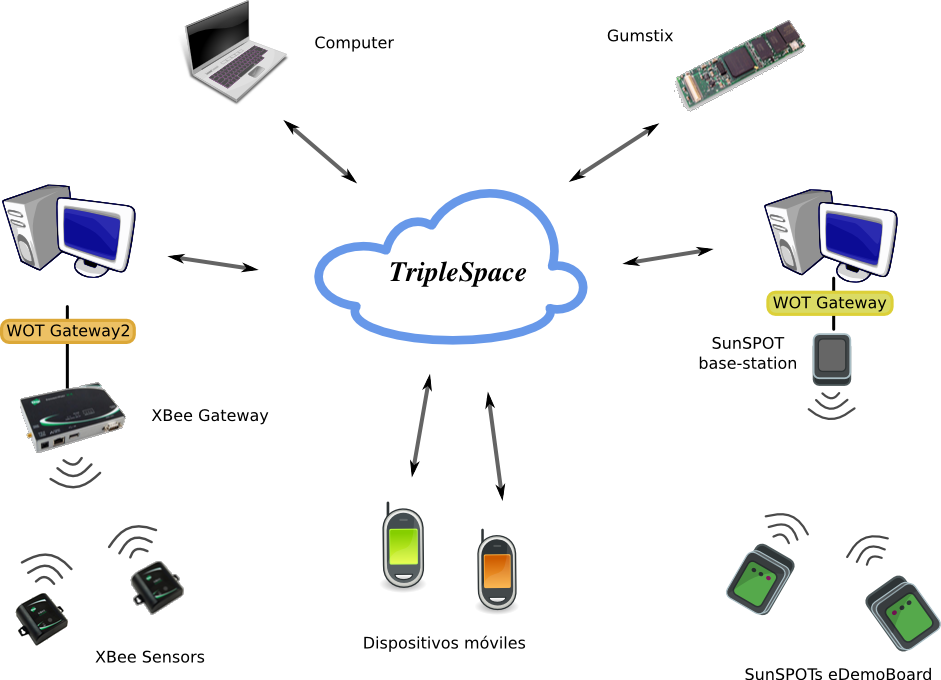ISMED -- Intelligent Semantic Middleware for Embedded Devices
Start date: January 2008
End date: December 2010
The triple-spaces based middleware developed in ISMED was the base of the open-source project called OtsoPack. To see updated information go to its official web site.
The ISMED (Intelligent Semantic Middleware for Embedded Devices) project aims to provide the required software infrastructure to develop and deploy cooperative intelligent (industrial, administrative or home) environments equipped by heterogeneous wireless embedded devices. This semantic middleware adopting the SOA paradigm will be based on the following six core aspects:
- Sensing: allows for the capture of environment contextual data through sensors. In particular, the usage of intelligent cameras will allow for people detection and tracking. Other sensor types will gather knowledge about user habits and preferences. The sensorial data captured will be translated into a semantic format useful for the rest of elements.
- Service discovery: allows for the discovery of devices together with their services encountered within an environment. The discovered services are described by means of semantic techniques so that the service composition or reasoning elements can use the captured knowledge.
- Service composition: allows for the provision of composite services resulted from the functional composition and adaptation of two or more services provided by other devices. A key difference compared to other more static and centralised enterprise composition approaches is that the composition process will be continuous, dynamic and completely distributed.
- Learning: it will allow for the cooperative learning of a set of behaviour rules among a community of embedded devices, thus adding new intelligence to the environment. Besides, it will serve to identify hidden unexpected relationships among services through machine learning techniques.
- Reasoning: each device will individually accomplish some reasoning taking into consideration both its own sensor readings exported as services to other devices, and the readings and capacities published by other devices to the environment during the discovery phase.
- Semantic Modelling: it will act as integrator of other aspects of the middleware, providing a common core infrastructure in the form of a repository of semantic knowledge shared. It will be responsible of gathering the RDF graphs defining the context of services and sensor samples which characterise an environment. Its behaviour will be analogous to a Tuple Spaces system which in this case is extended with semantic capacities, i.e. a distributed and shared RDF store on which the discovery, reasoning, composition and learning aspects of this middleware will be supported.
The semantic middleware provided, extensible to any cooperative environment, will be deployed and validated in an Ambient Intelligence (AmI)-dedicated research lab at the University of Deusto, namely SmartLab. This lab is equipped with a plethora of sensorial and actuation devices which thanks to this semantic infrastructure will seamlessly cooperate in order to provide intelligent services to the end-users.
Dowloads
- Project proposal (Spanish)
- Technical report 2008 (Spanish)
- Technical report 2009 (Spanish)
- Technical report 2010 (Spanish)
- A Triple Space-Based Semantic Distributed Middleware for Internet of Things
The ISMED project was presented at TouchTheWeb'10, an International Workshop on Web-enabled Objects held in conjunction with the International Conference on Web Engineering (ICWE). The presentation explains the proposed middleware for enabling communication between heterogeneous devices through a shared space. - A Semantic Resource Oriented Middleware for Pervasive Environments
- Middleware Semántico Orientado a Recursos para Entornos Ubicuos (Spanish)
- On the complementarity of Triple Spaces and the Web of Things
Contact
For further information, please contact Aitor Gómez Goiri (aitor.gomez [AT] deusto.es) or PhD. Diego López de Ipiña (dipina [AT] deusto.es).



